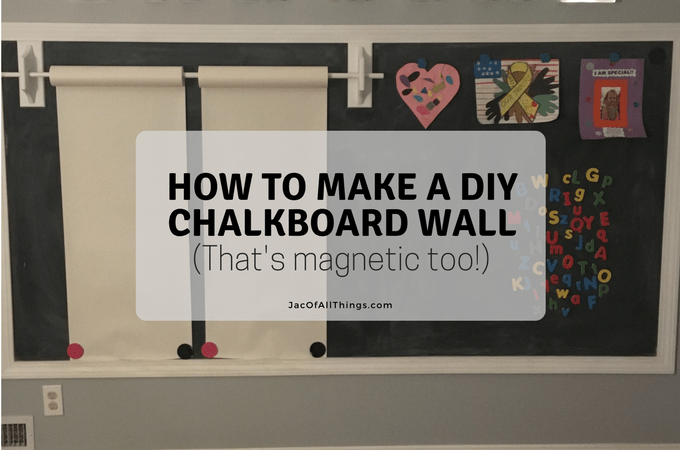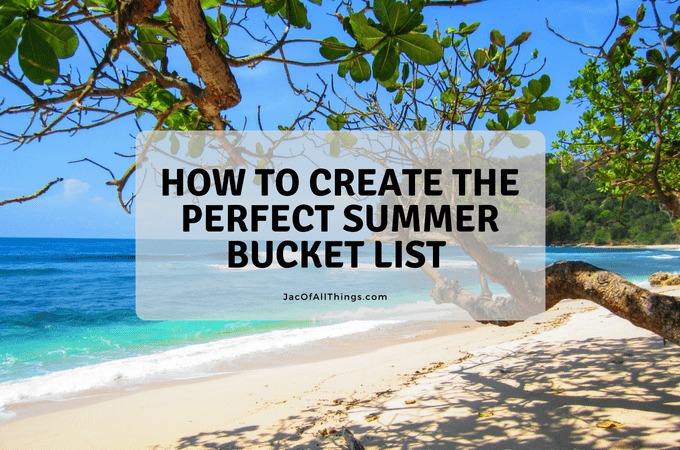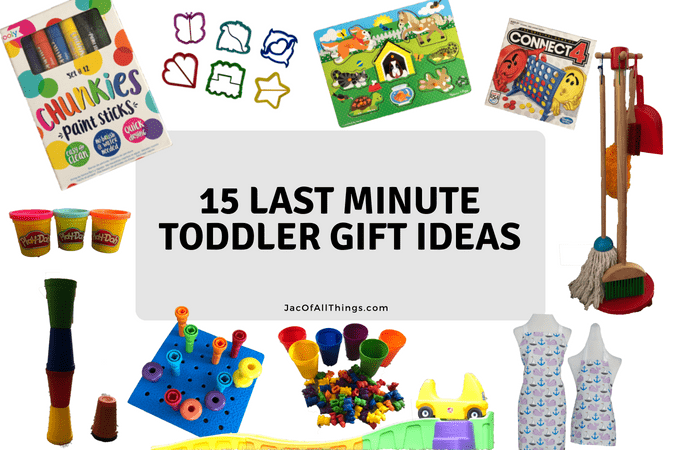I’m a pretty black and white person. I read the directions. I follow the rules (usually). And one of my biggest faults has always been lack of flexibility. Very soon after having kids, I realized that the world cannot be black and white. That flexibility was a must. And that kids frankly don’t care what the instructions say – they will do what they want and have fun how they want it. I’ve always been envious of my husband’s ability to play with kids with such a free spirit. You could give him a napkin and he would come up with five different ways to turn it into a toy or game and have all the kids engaged in whatever activity he put together. (In fairness, he is a pediatric speech and language pathologist, so I think his schooling somewhat helped here!)
I’d frequently watch him with our girls, or with others kids, and tell him he has such a talent. To him, he was just playing. But to people like me, his skill is one to be admired. I started to ask him to show me more. I wanted to be able to play with a ball with my daughters and not just play catch. I wanted to learn how to create fun games that were also (secretly) teaching my girls practical life skills, like speech, development, and motor skills.
One day, as we were cleaning up the girl’s playroom, we started talking about Play-Doh. I made some sort of comment along how long they could really play with the Play-Doh. He challenged me back, saying he could use it as his only toy during a speech therapy session and have the child engaged the whole time. I was intrigued. I challenged him to teach me his ways.
From this conversation, yielded a new post idea – 5 Ways to Play with Play-Doh. I asked him to not only teach me, but teach everyone else out there, who like me, may not be gifted with the imaginary nature to come up with these ideas on their own. He, being a speech and language therapist, took it one step further, and told me that he would not only teach us how to be creative and use toys in several ways, but also teach us how these ways help our children and what skills we are working on during the various activities. (Mainly from a speech therapy perspective.)
With that, I’m going to pass the reins over to my husband to teach us 5 Ways to Play with Play-Doh.
And spoiler alert – he has already outlined several other “5 Ways to Play with….” articles since I’ve asked him to create this one. I’ll be posting his additional articles in the upcoming weeks so you can continue to learn how he plays with other toys and how you can use these skills with your children.
Disclosure: I may earn money or products from any of the companies mentioned in this post. Purchasing through an affiliate link comes at no extra cost to you. As an Amazon Associate I earn from qualifying purchases.
5 Ways to Play with Play-Doh (Tips from a Speech Therapist)
By Drake Hastings, MS, CCC-SLP
http://www.alphabetsoupomtherapy.com/
A single toy can be used in a variety of ways while targeting a wide variety of developmental skills. For the purpose of this article we will focus more so on the speech and language areas of development.
Before we get into the specific activities, I want to talk about structure of play.
There are two ways you can structure an activity to facilitate speech and language from your child in play:
- Adult-Directed Play
- Child-Directed Play
If you are simply sitting down with your child for playtime with no formal goals, this section may not apply. However, if you are looking to play with the purpose of teaching skills, specifically speech, you’ll want to understand the difference between adult-directed, and child-directed play.
Adult-Directed Play
- During adult-directed play, the adult should have control of the desired object throughout the activity.
- Only allow the child to touch the desired objects on your terms.
- You should aim for repetition – try withholding, modeling, and rewarding to encourage repetition.
- You should have a clear understanding of where the child is in their development. As an example, if they are mostly producing syllables and some words, only ask them to repeat at the syllable and word level.
- You should have a clear understanding of what you will accept in order to give the reward (i.e. the desired object). (As an example, if you are working on speech, are you accepting a sound /b/, a syllable (bah), a word (ball), a phrase (want ball), or a sentence (I want ball please).
- Be sure to meet the child at their level. Help them be successful in order to get the most out of the child and the activity.
Child-Directed Play
- During child-directed play, you are following the child’s lead throughout the activity.
- You will primarily be commenting and describing while you play.
For this activity we will focus on ideas for adult directed play.
If your goal is working on speech or sound production, here are a few tips.
Helpful hints to elicit sound production
- Use a slow, singsong voice while modeling. While you play, slow your rate down and using a rising and falling intonation (i.e. like you are singing) to help increase the chance the child will process and understand what you’re saying.
- Praise the child at any attempt of communication. You can praise the child by either cheering them on to try again, or you can give them the reward and move onto the next attempt.
- Hold items near your mouth. Children learn by watching and imitating. Encourage them to watch your mouth by holding the desired toy (if possible) near your mouth.
- Gently Sabotage – Hold the cup of play with a closed lid and hand to the child. If they struggle to open and hand it back to you model, “open?? Tell me open”.
5 Ways to Play with Play-Doh (from a Speech Therapist)
Use Play-Doh to Learn Body Parts
- Take a piece of Play-Doh and pat it into a small circle while modeling “pat pat”. (Action word)
- Tell the child, “It’s a face. Who do you want to make? (Or, tell the children who you will make – “Let’s make Mommy.” (Skill: Answering “Wh” questions)
- Ask the child “How does Mommy see?” (Skill: Body part function). Child replies eyes, or you guide child to response.
- Ask the child “How many eyes does she have?” (Skill: Concept of numbers) Child replies two, or you guide child to response.
- Take two small pieces of Play-Doh and roll into small balls. Ask the child “Where do the eyes go?” (Skill: Answering location) Allow them to direct you to where to place them on the Play-Doh face.
- Continue to ask the child questions about other parts of the face, following the same process as noted above.
See this skill in action. Watch how you can use Play-Doh to learn body parts here.
Use Play-Doh to Make (Pretend) Food
- Take a piece of Play-Doh and pat it into a small circle while modeling, “pat pat.” (Action word)
- Tell the child, “It’s a cookie!”
- Ask, “Do you want more cookies? Tell me, mmmore”
- Take the cookie and pretend to eat it, or feed it to a stuffed animal. Model “Eat bear, eat!” (Skill: Combining nouns + verbs)
- Next make a smaller cookie, then a bigger cookie. Talk about the size difference and label each accordingly. (Skill: Adjectives)
- Ask the child to choose which food you will make next, or if non-verbal, you make another item. (i.e. pizza, sandwich, bowl of soup)
See this skill in action. Watch how you can use Play-Doh to make pretend food here.
Use Play-Doh with Coins
(Wash coins in warm soapy water to disinfect before using. This activity is for children who will not mouth small objects)
- Roll entire Play-Doh into a long strip (like a snake.)
- Put a small amount of change into a container or bag.
- Model “open” as you hold the container shut. (Skill: Requesting action)
- Ask, “Do you want one? Tell me, give me.” (Skill: Requesting object)
- Ask, “Do you want one? Tell me, yes!” (Skill: Answering yes/no questions)
- Ask, “Do you want little (penny) or big (quarter)?” (Skill: Adjectives)
- Give to child and show them how to stick the coin into the Play-Doh while saying, “put in”. (Skill: Preposition – in)
- Continue the activity with requesting, “more” or any of the concepts above. (Skill: Requesting more)
- Once the Play-Doh is relatively full, have the child remove the coins and put back in the bag. This tends to be a very calming and organizing activity for children.
See this skill in action. Watch how you can use Play-Doh to play with coins here.
Use Play-Doh to Make Jewelry
- Roll a thin piece of Play-Doh while saying, “roll roll” (action word)
- Ask do you want a ring? (Skill: Answering yes/no questions)
- Say, “Where is your finger?” (Skill: Identifying body parts)
- When they hold out, model “on finger” as you place on finger (Skill: On/off concept)
- You can make larger ones for a bracelet, necklace, and anklet. (Skill: Identifying multiple body parts).
- You can ask, “do you want 1 ring, or 2 rings?” (Skill: Concept of 1, and also using plural “s”).
See this skill in action. Watch how you can use Play-Doh to make jewelry here.
Use Play-Doh to Create Simple Shapes and Facilitate Speech
- Take a pinch of Play-Doh
- Hold up and ask, “Do you want a ball?” (Skill: Answering yes/no questions)
- Model, “roll ball….roll…ball”
- Roll the Play-Doh into a ball
- Hold up near your mouth and model, “Ball!”
See this skill in action. Watch how you can use Play-Doh to facilitate speech here.
Receive Weekly Life Hacks and Practical Advice!
If you want to be notified of future posts, be sure to sign up for our email notification list! You will receive a weekly email with the latest posts added to Jac of All Things, as well as a weekly “Did you know” tidbit of information or life hack to make your life easier! To receive this amazingly awesome information and email notifications of new posts, simply provide your email address below. By using this form you agree with this site’s privacy policy.
Popular Posts
Customizable Summer Bucket List and Calendar
15 Last Minute Gift Ideas for Toddlers
Disney World on the Cheap – How we paid less than $1,850 for a Family for Four
Receive Weekly Life Hacks
Subscribe to receive exclusive life hacks and practical information sent directly to your inbox! By using this form you agree with this site's privacy policy.








0 Comments